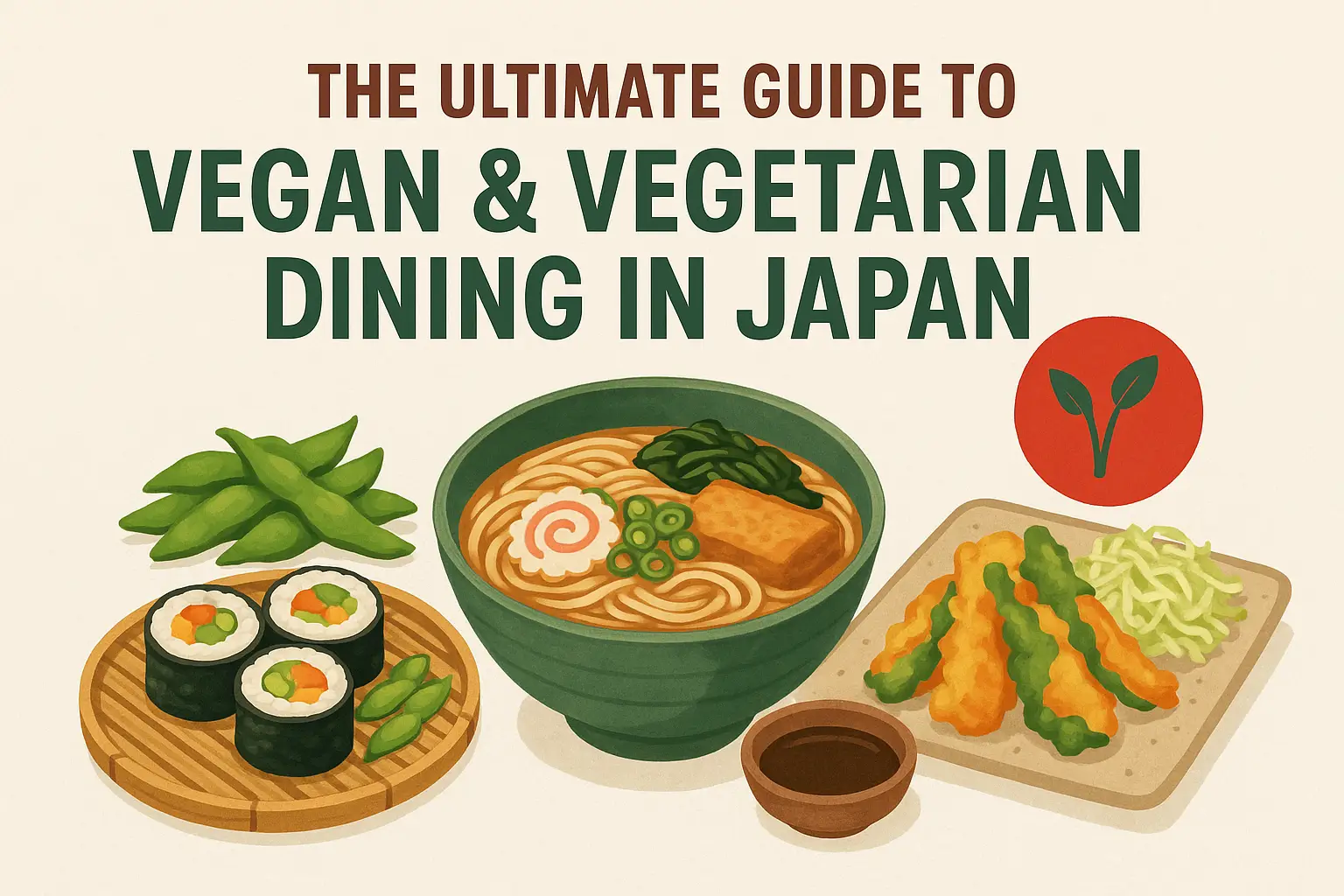Introduction: Why Japan Is a Plant-Based Paradise in Disguise
Japan is a land of contrasts — ancient traditions meet modern innovation, bustling megacities coexist with quiet temples, and centuries-old recipes find new life in today’s kitchens. For vegans and vegetarians, Japan may seem challenging at first. The country’s love for fish, meat, and subtle animal-based seasonings like dashi (fish stock) can make dining out tricky.
But hidden behind that first layer is a rich and rewarding plant-based culture. Shojin ryori (Buddhist temple cuisine) has been vegan for centuries. Seasonal vegetables are celebrated as much as sushi. And in recent years, an explosion of vegan and vegetarian restaurants has transformed Japan into a surprisingly accessible destination for conscious eaters.
In this ultimate guide, you’ll learn:
- How to navigate Japanese menus as a vegan or vegetarian.
- The best plant-based Japanese dishes to try.
- Regional vegan specialties across Japan.
- The rise of vegan-friendly cafes, bakeries, and ramen shops.
- How to use our Japan Vegan & Vegetarian Restaurant Directory to find your next meal.
Chapter 1: The Roots of Plant-Based Cuisine in Japan
Shojin Ryori – The Original Vegan Cuisine
Long before veganism became a global trend, Japan had shojin ryori — a Buddhist temple cuisine developed over 700 years ago. Rooted in the principle of ahimsa (non-violence), it excludes all animal products, including meat, fish, eggs, and dairy.
Key characteristics:
- Focus on seasonal produce.
- Balanced flavors — salty, sour, sweet, bitter, and umami.
- Use of soy-based proteins like tofu and yuba (tofu skin).
You’ll find shojin ryori in temple towns like Kyoto, Kamakura, and Mount Koya, often served as a beautifully arranged multi-course meal (kaiseki style).
Traditional Plant-Based Staples
Many everyday Japanese foods are already vegetarian-friendly:
- Onigiri — Rice balls with fillings like umeboshi (pickled plum) or kombu seaweed.
- Miso soup — Ensure it’s made with kombu dashi instead of fish-based stock.
- Vegetable tempura — Lightly battered seasonal vegetables fried in oil.
- Tsukemono — Pickled vegetables served as side dishes.
Chapter 2: Common Challenges for Vegans in Japan
While Japan has plenty of plant-based foods, there are common pitfalls:
- Hidden Fish Stock (Dashi) — Found in soups, sauces, and even rice.
- Bonito Flakes (Katsuobushi) — Often sprinkled on tofu, okonomiyaki, and vegetables.
- Egg & Dairy in Unexpected Places — Mayonnaise is popular in salads, and bread often contains milk.
- Miso Soup with Fish Stock — Even vegetarian-looking soups may be made with bonito.
Solution: Learn a few Japanese phrases (see Chapter 3) and always confirm the ingredients with the staff.
Chapter 3: Language & Ordering Tips for Vegans and Vegetarians
Key Phrases
- 私はベジタリアンです (Watashi wa bejitarian desu) – I am vegetarian.
- 動物性は食べません (Doubutsusei wa tabemasen) – I don’t eat animal products.
- 肉・魚・卵・乳製品は食べません (Niku, sakana, tamago, nyuuseihin wa tabemasen) – I don’t eat meat, fish, eggs, or dairy.
- だしは昆布で作っていますか? (Dashi wa konbu de tsukutte imasuka?) – Is the soup stock made with kombu?
Tip: Write these on a card or keep them on your phone to show restaurant staff.
Chapter 4: Must-Try Vegan & Vegetarian Japanese Dishes
Vegan Ramen
Once rare, vegan ramen is now thriving in Tokyo, Kyoto, and Osaka. Look for shops like T’s Tantan in Tokyo Station or Soranoiro in Kojimachi, which offer creamy sesame-based broths with no animal products.
Plant-Based Sushi
Many sushi chefs now create rolls using avocado, cucumber, pickled vegetables, and even marinated tofu. Try Sushi Saito Vegan in Tokyo for a dedicated vegan sushi experience.
Okonomiyaki Without Meat or Fish
This savory pancake is usually topped with bonito flakes, but vegan versions exist — often using mushrooms, cabbage, and vegan mayo.
Shojin Ryori Kaiseki
A fine-dining experience you’ll never forget. Every course is seasonal, artfully plated, and deeply flavorful without relying on animal products.
Chapter 5: Regional Vegan & Vegetarian Highlights
- Tokyo — Trendy vegan cafes, ramen shops, and international vegan cuisine.
- Kyoto — Shojin ryori temples and matcha vegan desserts.
- Osaka — Street food favorites like vegan okonomiyaki and takoyaki.
- Hokkaido — Fresh produce, vegan soup curry, and dairy-free sweets.
- Okinawa — Tropical vegan dishes like goya champuru without pork.
Chapter 6: The Rise of Vegan Dining in Modern Japan
Over the past decade, the number of vegan and vegetarian restaurants has tripled in Japan. Influenced by tourism, environmental awareness, and the growing health-conscious trend among Japanese youth, plant-based dining is now woven into Japan’s culinary identity.
Chapter 7: How to Use Our Directory to Find Your Next Meal
Our Japan Vegan & Vegetarian Restaurant Directory lets you:
- Search by city or prefecture.
- Filter by cuisine type (Japanese, Western, dessert, cafe).
- View opening hours and Google Maps locations.
- Read user reviews and ratings.
Whether you’re in bustling Tokyo or a rural onsen town, our directory ensures you won’t go hungry.
Conclusion: Eat Well, Travel Light, Live Fully
Vegan and vegetarian dining in Japan is a rewarding journey. With the right tools, a few Japanese phrases, and a spirit of adventure, you’ll discover flavors and experiences you’ll never forget.
Ready to start? Browse our [Japan Vegan & Vegetarian Restaurant Directory] and plan your next meal today.




